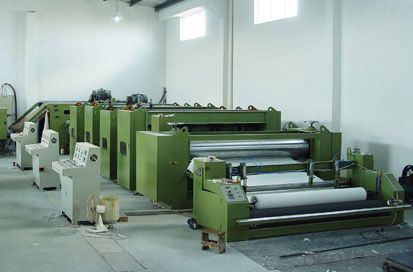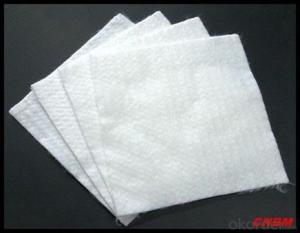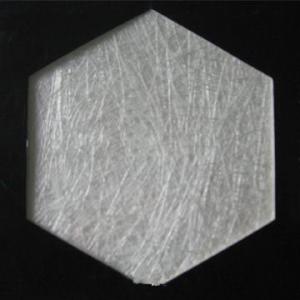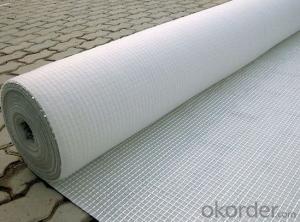Patio Geotextile - Polyester Spunbond Nonwoven Fabric for Road Construction
- Loading Port:
- Qingdao
- Payment Terms:
- TT OR LC
- Min Order Qty:
- 10000 m²
- Supply Capability:
- 500000 m²/month
OKorder Service Pledge
OKorder Financial Service
You Might Also Like
Polyester Spunbond Nonwoven Fabric Images




Polyester Spunbond Nonwoven Fabric Specification:
Project Model | 100 | 150 | 200 | 250 | 300 | 350 | 400 | 450 | 500 | 600 | 800 | Remarks | |||||||
Weight difference on unit area ,% | -8 | -8 | -8 | -8 | -7 | -7 | -7 | -7 | -6 | -6 | -6 | ||||||||
Thickness,mm >= | 0.9 | 1.3 | 1.7 | 2.1 | 2.4 | 3.5 | 4.2 | 5.3 | 7.6 | 10.0 | 14.2 | ||||||||
Width deviation,% | -0.5 | ||||||||||||||||||
Breaking strength,KN/m >= | 2.5 | 4.5 | 6.5 | 8.0 | 9.5 | 11.0 | 12.5 | 14.0 | 16.0 | 19.0 | 25.0 | Longitudinal Transverse | |||||||
Elongation at break,% | 25~100 | ||||||||||||||||||
CBR-test,KN >= | 0.3 | 0.6 | 0.9 | 1.2 | 1.5 | 1.8 | 2.1 | 2.4 | 2.7 | 3.2 | 4.0 | ||||||||
Equivalent opening size (EOS) O90,mm | 0.07~0.2 | ||||||||||||||||||
Coefficient of vertical permeability. cm/s | K×(10-1~10-3) | ||||||||||||||||||
Tearing strength,KN >= | 0.08 | 0.12 | 0.16 | 0.20 | 0.24 | 0.28 | 0.33 | 0.38 | 0.42 | 0.46 | 0.60 | Longitudinal Transverse | |||||||
FAQ
We have organized several common questions for our clients,may help you sincerely:
Q1: How about your company?
A1:Our company are one of the largest geosynthetic products supplier in the world.We have the products experience more than 20 years.Already export to USA/Germeny/Australia/Zambia/Brazil etc.more than 20 countries.Almost 10years.Our products including Geocell/Fiberglass Geogrid/Geomembrane/Geotextile/Geonet etc.
Q2:Can you send samples to us ?
A2:Yes , free samples could be provided , but customer need pay for the freight cost .
After order placed , the freight charge could be refund .
Q3:What’s your Payment term ?
A3:T/T , L/C , Western Union,Paypal ...
Q4:What’s your manufacture process time ?
A4:Usually within 20 days
- Q: Woven geotextile customs code is how much
- To see what material system, even if there are many kinds of chemical fiber, such as long fiber staple fiber, polyester nylon and what process after dyeing, yarn dyed, printing and other processes are impregnated coating, etc. you reported a name not check of
- Q: What are the installation guidelines for geotextiles used in erosion control blankets?
- The installation guidelines for geotextiles used in erosion control blankets typically involve preparing the site by removing any vegetation, debris, or loose soil. The geotextile is then unrolled and placed over the desired area, ensuring it is smooth and wrinkle-free. It is important to secure the edges of the geotextile using stakes or pins to prevent movement. Additionally, proper overlap and anchoring techniques should be employed to ensure optimal erosion control. It is always recommended to consult the specific manufacturer's guidelines for detailed instructions.
- Q: What are the advantages of using geotextiles in groundwater protection systems?
- Geotextiles offer numerous advantages in groundwater protection systems. Firstly, they act as a reliable barrier against soil erosion, preventing sedimentation and contamination of groundwater sources. Secondly, geotextiles provide effective filtration, allowing water to pass through while preventing the movement of fine particles and pollutants. Additionally, these materials enhance the stability of soil and provide reinforcement, reducing the risk of structural failures in groundwater protection systems. Lastly, geotextiles are durable, cost-effective, and easy to install, making them a practical choice for long-term groundwater protection.
- Q: What is PAG in PAG composite geotextile
- Should be a high-strength glass fiber or grille and non-woven woven or bonded together geotextile, PAG is estimated that the product is a product code, one may be nominal vertical and horizontal strong, similar geogrid Such as PAG50-160, the other may be used cloth and grille specifications, such as 50kn grille and 160 grams of nonwovens
- Q: How do geotextiles improve the performance of shorelines?
- Geotextiles improve the performance of shorelines by providing erosion control, stabilizing the soil, and promoting vegetation growth. These synthetic fabrics act as a barrier that prevents soil erosion caused by waves, tides, and currents. Geotextiles also help to distribute hydraulic pressure, reducing the impact of water on shorelines. Additionally, they facilitate the growth of vegetation by retaining moisture and providing a stable base for plant roots, further reinforcing the shoreline and enhancing its overall performance.
- Q: How do geotextiles help in preventing soil liquefaction?
- Geotextiles help in preventing soil liquefaction by providing stability and reinforcement to the soil. They act as a barrier and restrict the movement of soil particles, thereby reducing the potential for liquefaction. Additionally, geotextiles enhance the drainage capacity of the soil, allowing water to flow through and preventing the buildup of excess pore pressure, which is a major factor leading to liquefaction.
- Q: Can geotextiles be used in waste storage facility applications?
- Yes, geotextiles can be used in waste storage facility applications. Geotextiles are commonly used in waste containment systems to provide separation, filtration, and reinforcement. They help prevent the spread of contaminants, improve drainage, and enhance the stability of the waste storage structure.
- Q: Is it possible to isolate permeated geotextiles and impervious geotextiles?
- Geotextile is permeable, and water, but the soil, from the filter effect, impermeable geotextile is geomembrane composite geotextile composite products, is impermeable and waterproof, I am specializing in the production of geotechnical materials,
- Q: Basement roof cover soil thickness and geotextile shop in what position,
- The size of the thickness of the roof cover of the basement garage is in the specification of the air defense design
- Q: How is the strength of geotextiles determined?
- The strength of geotextiles is typically determined through laboratory testing, which involves assessing various mechanical properties such as tensile strength, puncture resistance, and tear strength. These tests help evaluate the geotextile's ability to withstand different loads and stresses, ensuring its suitability for specific engineering applications.
Send your message to us
Patio Geotextile - Polyester Spunbond Nonwoven Fabric for Road Construction
- Loading Port:
- Qingdao
- Payment Terms:
- TT OR LC
- Min Order Qty:
- 10000 m²
- Supply Capability:
- 500000 m²/month
OKorder Service Pledge
OKorder Financial Service
Similar products
Hot products
Hot Searches
Related keywords


































